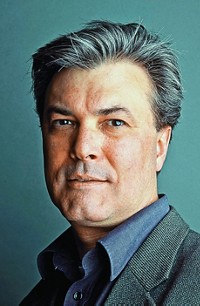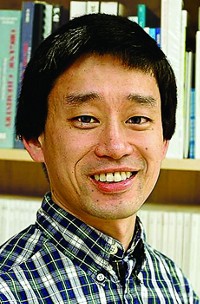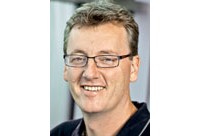Advertisement
Grab your lab coat. Let's get started
Welcome!
Welcome!
Create an account below to get 6 C&EN articles per month, receive newsletters and more - all free.
It seems this is your first time logging in online. Please enter the following information to continue.
As an ACS member you automatically get access to this site. All we need is few more details to create your reading experience.
Not you? Sign in with a different account.
Not you? Sign in with a different account.
ERROR 1
ERROR 1
ERROR 2
ERROR 2
ERROR 2
ERROR 2
ERROR 2
Password and Confirm password must match.
If you have an ACS member number, please enter it here so we can link this account to your membership. (optional)
ERROR 2
ACS values your privacy. By submitting your information, you are gaining access to C&EN and subscribing to our weekly newsletter. We use the information you provide to make your reading experience better, and we will never sell your data to third party members.
Synthesis
ACS Award for Creative Work in Synthetic Organic Chemistry
January 2, 2006
| A version of this story appeared in
Volume 84, Issue 1
Sponsored by Aldrich Chemical Co.
Stephen L. Buchwald, Camille Dreyfus Professor of Chemistry at Massachusetts Institute of Technology, "has changed the way medicinal chemistry is practiced throughout the world," says Eric N. Jacobsen, Sheldon Emery Professor of Chemistry at Harvard University.
Buchwald has done so through the discovery and development of carbon-nitrogen bond-forming processes, using both palladium and copper catalysts. Although representing just one advance from Buchwald's research, this aspect of his work has had the most striking impact on the field of organic chemistry and has led to some of the most widely used reactions in the world.
"It is no exaggeration to say that virtually every major pharmaceutical company practices Buchwald chemistry on a daily basis," Jacobsen says. "While other researchers have made substantial contributions to this field, Buchwald's catalyst systems, procedures, and insights have played a key role in bringing catalytic cross-coupling methods for carbon-heteroatom bond construction to the forefront of organic chemistry."
In recent years, Buchwald has been intensively investigating Pd- and Cu-catalyzed C-C, C-O, C-N, and C-H bond-forming reactions. These have substantially changed the way synthetic chemists think about building many classes of molecules, offering "powerful new methods of exceptional utility," according to MIT chemistry professor Gregory C. Fu.
"When we started doing this type of chemistry 12 years ago, a top priority was to make the chemistry useful to others, so we talk with people and listen to what they are saying," Buchwald says, adding that this thinking was influenced by Nobel Laureate K. Barry Sharpless of Scripps Research Institute.
Buchwald has developed methods for cross-coupling aryl halides or triflates with amines and alcohols. His Pd-catalyzed method for constructing aromatic amines allows chemists to get away from classical nitration-reduction chemistry. "Buchwald-Hartwig amination is arguably one of the two most important chemical transformations developed in the 1990s," says Larry E. Overman, distinguished professor of chemistry at the University of California, Irvine.
In the area of C-C couplings, Buchwald reported the first examples of Suzuki-Miyaura coupling processes using unactivated aryl chlorides, as well as the first of these reactions that can be carried out at room temperature. He demonstrated the ability to effect Suzuki-Miyaura couplings to prepare extremely hindered biaryls. He also reported the first system for a Suzuki-Miyaura coupling of unactivated aryl tosylates and asymmetric Suzuki-Miyaura couplings to form functionalized chiral biaryls.
There have been other firsts among the reactions developed in his lab. These include the selective arylation of ketone enolates and coupling with aryl chlorides and aryl tosylates. He also described the first asymmetric variant and a useful asymmetric arylation of lactone enolates catalyzed by a nickel-BINAP complex. In the area of catalytic asymmetric reductions, he has reported work on the Cu-catalyzed asymmetric conjugate reduction of enones.
Buchwald, 50, received his Sc.B. from Brown University, Providence, R.I., in 1977 and then a Ph.D. from Harvard University in 1982. After a period as a postdoctoral fellow at California Institute of Technology, he joined the faculty of MIT in 1984. He is a member of the American Academy of Arts & Sciences and has received numerous awards and honors, including the 2000 ACS Award in Organometallic Chemistry and the 2005 Bristol-Myers Squibb Distinguished Achievement Award in Synthetic Organic Chemistry.
The award address will be presented before the Division of Organic Chemistry.—Ann Thayer






Join the conversation
Contact the reporter
Submit a Letter to the Editor for publication
Engage with us on Twitter